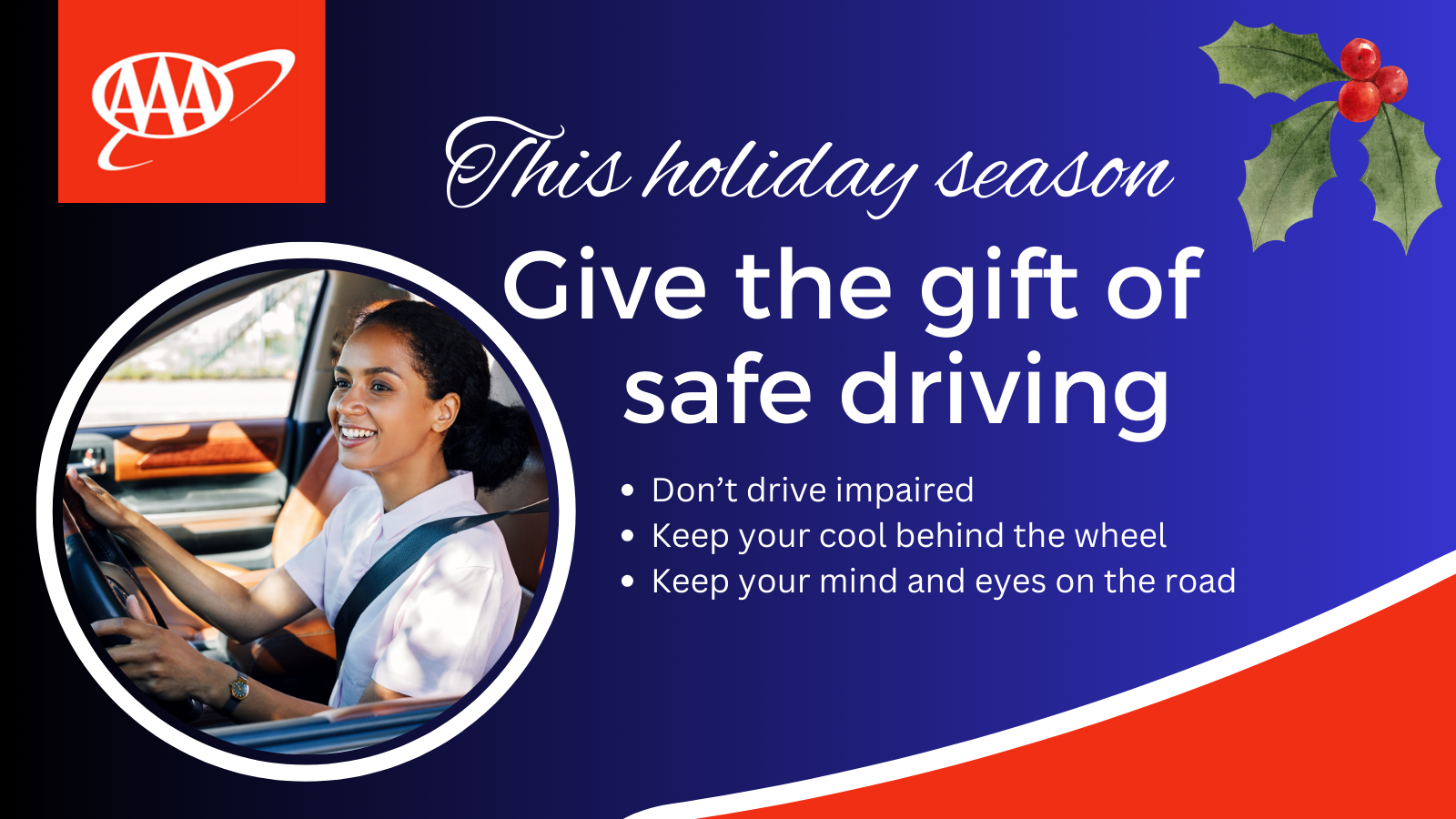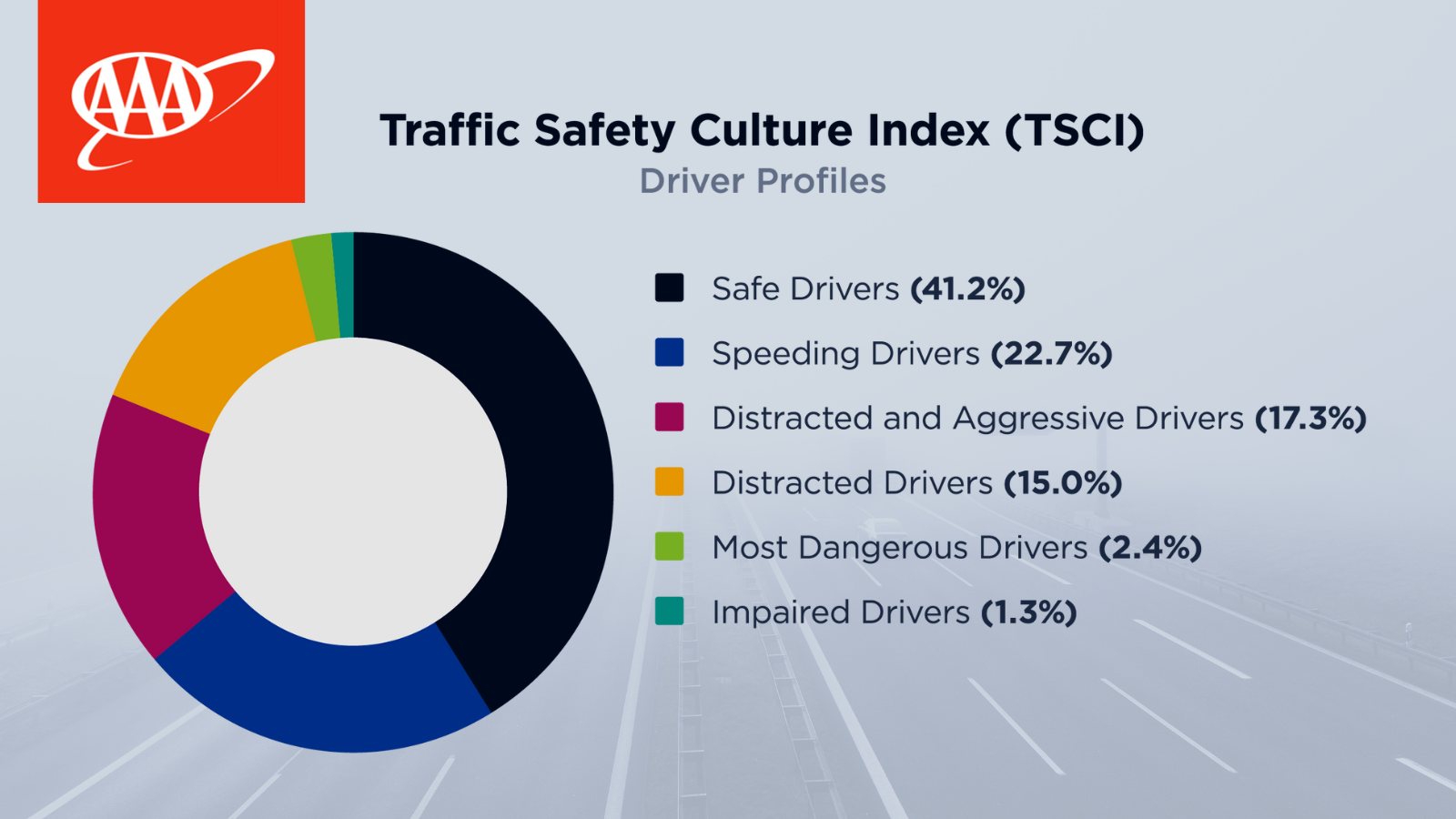While the holiday season is often characterized as a time of merriment and good will toward others, it can also be the season of distraction, impairment and stress behind the wheel.
“The holidays are considered a time of warmth and happiness. But those images can be marred by heavier traffic congestion, the hustle and bustle of shopping, family tensions and overwhelming expectations,” said Rylie Fletcher, spokesperson for AAA Oklahoma. “When drivers bring holiday stress and heightened emotions to the roadway, the results can be deadly.”
Holiday season becomes perfect storm
While shopping for gifts and enjoying time with family and friends are staples of the season, many of these components of the holidays can also contribute to greater risks for road users.

Heightened traffic congestion, along with a whole host of human and environmental factors, can set off road rage behaviors over the holidays. This could include everything from shoppers trying to finish their gift lists to those enduring heightened financial or family tensions.
Though road rage often comes to mind, aggressive driving includes a whole host of unsafe driving behaviors, such as weaving through traffic, running traffic lights, tailgating and speeding. When aggressive driving becomes extreme or violent, road rage can erupt.
But flaring tempers aren’t the only risk heightened over the holidays. Although drunk driving is a problem on our nation’s roadways every day, it’s more prevalent during the holidays, according to the National Highway Traffic Safety Administration (NHTSA). During the New Year’s and Christmas periods in 2020, there were 209 drunk-driving-related fatalities, all 100% preventable.
While the hustle and bustle of the holidays may be enjoyed by many, the pace and expectations of the season can be a burden to others, resulting not only in aggression and higher incidences of impairment behind the wheel, but mental distraction as well. All the demands of the holiday season can cause a driver’s mind to wander elsewhere, even for those who enjoy the season. Add to this the distractions of mobile devices, eating on the run and even vehicle tech and holiday lights, and distracted driving becomes a significant concern over the holidays.
“The tragedy of these deaths and injuries is felt year-round, but for many, the pain is felt most strongly during the holidays,” AAA’s Fletcher said. “Whether it’s running red lights, tailgating, becoming distracted behind the wheel or driving impaired, the results of poor driving behaviors can impact families for generations.”
More than Half of All Drivers Engage in Dangerous Behavior
While drivers seem to be aware of the risks caused by dangerous actions behind the wheel, that does not seem to curb their inclination to practice bad driving habits during the holidays and all year long.
A new report by the AAA Foundation for Traffic Safety identifies six types of drivers by analyzing risky driving behaviors. The most common dangerous behaviors were speeding, distracted driving, and aggressive driving. The annual Traffic Safety Culture Index survey developed these six driver profiles by examining patterns of self-reported risky driving behaviors among a large group of drivers. Only 4 in 10 surveyed fall into the “Safe Drivers” category, meaning over half of drivers engage in one or more dangerous driving behaviors.
“Despite acknowledging the dangers, some drivers continue to engage in potentially deadly behaviors, particularly speeding,” said Dr. David Yang, AAA Foundation for Traffic Safety president and executive director. “Understanding the different types of risky driving behaviors, and the characteristics of drivers who engage in them, is crucial for developing targeted interventions to achieve safe mobility.”
While daily driving patterns and traffic volumes continue to rebound from pandemic lows, traffic fatalities remain alarmingly high. Evidence points to fewer traffic stops, but fatal crashes involving risky behaviors, like impaired driving and speeding, have become an epidemic on roadways.
The survey asked not only what driving behaviors the respondents engaged in, but also about their perceived level of danger for various driving behaviors. The majority of drivers perceived unsafe driving behaviors as very or extremely dangerous, and yet, as in past years, many admitted to doing these behaviors at least once in the previous 30 days.
According to the new Traffic Safety Culture Index (TSCI) report, fewer drivers perceive speeding as dangerous, and speeding behaviors―considered a form of aggressive driving―have the lowest perceived social disapproval of all the examined unsafe driving behaviors.
It is worth noting, however, that a motorist’s need for speed consistently fails to deliver shorter travel times. It would take driving 100 miles at 80 mph instead of 75 mph to shave just 5 minutes off a trip.
The six driver profiles identified by the latest Traffic Safety Culture Index (TSCI) are:
- Safe Drivers (41.2%) – Few in this group reported engaging in any risky driving-related behaviors. More women (57%) than men composed the Safe Drivers group.
- Speeding Drivers (22.7%) – These drivers predominantly engaged in speeding behaviors, driving 15 mph over the speed limit on freeways and/or 10mph over the limit on residential streets. Males represented about 60% of Speeding Drivers.
- Distracted and Aggressive Drivers (17.3%) – These drivers predominantly engaged in both distracted driving and aggressive driving behaviors.

- Distracted Drivers (15.0%) – These drivers reported engaging in distracted driving behaviors such as texting while driving.
- Impaired Drivers (1.3%) – This group reported they predominantly engaged in impaired driving.
- Most Dangerous Drivers (2.4%) – While the most dangerous group of drivers consisted of only a small percentage overall, they pose a serious risk to themselves and other road users, as they reported engaging in all risky driving-related behaviors. About 60% of the Most Dangerous Drivers were male.
Give the gift of safe driving
“It isn’t possible to control another driver’s behavior. But being aware that the holidays can bring added stress and tension, as well as increased distractions and traffic congestion, can help keep you safer this holiday season,” Fletcher added.
AAA has these tips for avoiding the risks of dangerous behavior on the roadways this holiday season:
- Spread good will with courteous driving. Follow the rules of the road and be courteous to others. If you inadvertently make an error that affects another driver, give a wave and smile. That simple act will often defuse a potential aggressor.
- Let the aggressor go on their merry way. If someone is tailgating you, change lanes or pull over when safe to do so and let the aggressive driver pass. They’re unlikely to engage any further.
- ‘Tis the season to keep your cool. Whether it’s Cousin Eddie overstaying his welcome, shopping taking its toll on your budget or simply too much to do in too little time, keep your emotions in check when driving. Carve out some time for stress relief and never get behind the wheel with heightened emotions.
- You don’t keep the naughty and nice list. Remember, you’re not Santa nor are you the police. Even if a driver is doing a poor job, it is not your place to correct them. Give other drivers the benefit of the doubt and don’t take their errors personally.
- Avoid adding to the noise, noise, noise. Don’t be a Grinch. Save the horn for an emergency situation or tap it lightly if you need to alert a driver to a changed traffic signal. Do not use it to “call out” the driving behaviors of others.
- Party with a plan. If your merriment includes consuming alcohol, have a plan in place before sipping the first hot buttered rum or spiked egg nog. Arrange for a designated driver or rideshare. Never driver impaired.
- Be realistic about your travel time. Santa has eight reindeer to guide him. Since you aren’t as lucky, consider the amount of traffic you’ll likely encounter and give yourself plenty of time to reach your destination without speeding or driving aggressively.
- Enjoy the season. The holidays bring a lot of expectations, whether it’s to be happier and less stressed than your reality or to accomplish an impossibly long to-do list. Feeling harried, depressed, angry or resentful can lead to aggressive or impaired driving, while having too much on your mind will cause distraction that takes your mind away from focusing on the road. Slow down and take a mental break from time to time.
“Remember, the holidays can bring a lot of stress and distraction, so keep both your to-do list and expectations realistic, while keeping your mind on your driving,” said Fletcher. “Focus on enjoying the season and extend the warmth of the holidays to others through the gift of safe driving.”
About the Annual Traffic Safety Culture Index (TSCI)
With a steadfast commitment to examining traffic safety, the AAA Foundation for Traffic Safety has conducted its annual TSCI survey for over a decade. As traffic safety concerns have escalated, insights from the latest TSCI shed light on public perceptions, attitudes, and engagement in unsafe driving behaviors, offering valuable guidance for developing effective countermeasures. Please refer to the full TSCI for data collection methodology and limitations.
About AAA Foundation for Traffic Safety
Established in 1947 by AAA, the Foundation for Traffic Safety is a nonprofit, publicly funded 501(c)(3) charitable research and educational organization. The AAA Foundation’s mission is to prevent traffic deaths and injuries by researching their causes and by educating the public about strategies to prevent crashes and reduce injuries when they do occur. This research informs the development of educational materials for drivers, pedestrians, bicyclists, and other road users.














